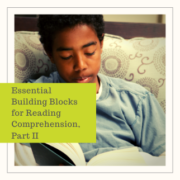Teacher Tips: Keeping Students Engaged in Virtual Math Class
As an avid reader, writer, and English teacher, nothing used to scare me more than the possibility of having to cover an absent colleague’s math class. Like a fish out of water, my literacy-geared mind simply cannot adapt to the math world. Now that we educators have moved into the virtual realm of instruction, at least for the time being, I am even more in awe of how my math teacher counterparts are able to reach their students when it comes to such complex skills. It goes without saying that, for students like myself who find math to be difficult to begin with, they must be finding online math instruction to be even more difficult. Another critical piece of this perplexing puzzle is this: how on earth are teachers now adapting to make online math instruction engaging?
Real World Connections
Just as we would in the physical classroom, in order to boost engagement for a lesson or concept, teachers should try their best to connect the activity or information to students’ real-world problems. Enough with the “train leaving the station at a certain time” word problems and examples. Students will inevitably zone out when the material is not relevant or familiar. Instead, use what you know about your students to incorporate their interests into your math lesson, then connect the content to a problem that they might actually need to solve at some point. Making the concepts less arbitrary by showing students how to use these math skills in the real world will take engagement to a new level.
- To teach measurements, perimeter, area, etc., have students make a plan for rearranging their room by actually measuring out their bedrooms and bedroom furniture.
- Visual learners can sketch a “floor plan” for where they could realistically move their bed, dresser, desk, etc.
- Kinesthetic learners may want to build a diorama or 3D representation of their bedroom arrangement proposal using everyday materials around the house like cardboard, straws, tape, sticky notes, etc.
- Teach percentages and healthy eating by demonstrating how much sugar is in some of your students’ favorite candies and treats. Poll students in advance and do a little research about how many grams of sugar are in some of their favorite candy bars.
- Then challenge students to represent those grams in tablespoons so that they can visually see how much sugar they are ingesting.
- Extend the activity by discussing how much of their daily recommended sugar intake is “eaten up” by choosing that candy bar. Ask students to figure out how much of a healthier treat, like grapes, they could eat in place of the candy bar—they’ll be amazed at the comparison.
- Teach concepts involving time by having students actually time themselves doing everyday tasks, like walking to the park, making their bed, brushing their teeth, etc.
- Then incorporate multiplication skills to see how many minutes students spend brushing their teeth in a year, for example.
- You can surprise them even more by asking them to track screen time for a week and then finding out the average time they might be spending in front of their phones per year.
Celebrate (and Learn from) the Errors
Students don’t often spend time reviewing math errors to gain a substantial understanding. Instead, they’re correcting mistakes for additional credit, or overlooking the missteps altogether. Teachers can boost engagement by capitalizing on students’ errors in non-judgmental ways.
- Teachers may want to try a practice called “the best mistake” in which they use anonymous student samples to analyze where a math problem went wrong.
- This activity encourages students to take on another’s perspective, reread and review material, and look critically at different mathematical functions and properties.
- This activity also helps to remove the stress around math quizzes and word problems by making light of errors and demonstrating how they happen to everyone—we all make mistakes sometimes. The key is to use those mistakes and improve in the future.
- Teachers can also increase engagement by letting students be the experts and intentionally making an error in a math problem.
- Tell students in advance that a step or number is incorrect. Ask students to discuss and collaborate in groups in order to spot the teacher’s error.
- Remember, kids always love being able to correct the teacher—even if the error is intentional.













